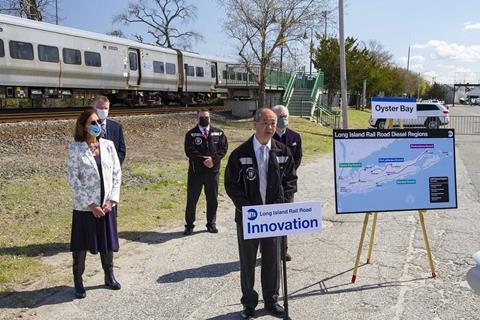
USA: MTA Long Island Rail Road and Alstom are to test the use of battery power with a view to enabling enable trains to run though from New York to the network’s diesel-worked branches.
‘People have been talking about extending electrification to various segments of the railroad for generations’, said MTA LIRR President Phillip Eng on April 19. ‘Embracing new technology might allow us to essentially electrify the entire railroad without the need for billions of dollars in massive capital investments.’
In the first phase of the project, which is expected to last eight months, technicians will evaluate specifications for batteries and where they could be placed on LIRR’s Bombardier Transportation M7 EMU vehicles. The batteries would be charged while the train is using third rail power on electrified lines.
The study will also look at the physical characteristics of the Oyster Bay and Port Jefferson branches to investigate whether and where recharging stations might be needed.
‘Part of the analysis will tell us if we need additional charging stations for longer distances, how fast can a battery recharge in a 60 sec station stop and if we decide to go further, how many charging stations would be required’, Eng explained.
Following the studies, LIRR plans to undertake trials with a prototype two-car train retrofitted with batteries; this would initially operate without passengers on the 20 km Oyster Bay branch. Testing on other non-electrified routes would follow. The railroad envisages that recharging of the prototype would take place in yards when the train is out of service, and during station stops if necessary.
‘If we have the ability to improve service on Oyster Bay, that improves service on Port Jefferson, Montauk and Ronkonkoma respectively’, said Eng. ‘Everybody benefits.’
If the trials are successful, the battery trains could be deployed anywhere that diesel commuter trains operate on the LIRR or Metro-North Railroad, eliminating the need for passengers to transfer between diesel and electric trains to reach New York City.
Conversion of some of the 836 M7 cars to operate with battery power would allow LIRR to consolidate its diesel fleet on the remaining non-electrified branches, enhancing the frequency of services on those routes and allowing trains to be lengthened to meet growing seasonal demand that has previously been met by leasing vehicles from Maryland’s MARC.

















